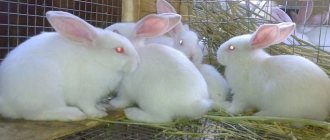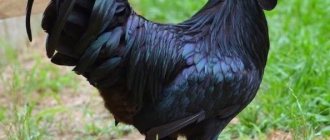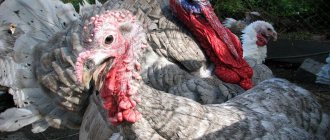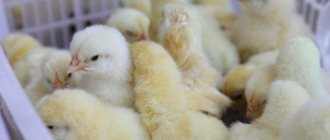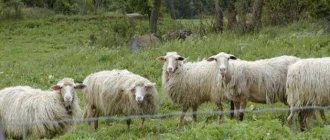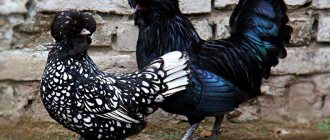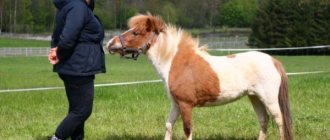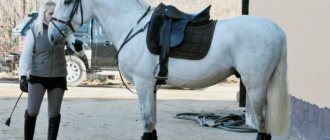Those of us who are actively interested in different breeds of chickens know that they are divided into meat and egg. Both directions are popular in their own way, are represented by many types and have their adherents. But many farmers are increasingly thinking about economic benefits, and for this, the chicken must lay eggs well, provide enough meat, and not be too voracious. In our opinion, mini-meat chickens have the above qualities; they come in such varieties as P-11 and B-33, which we’ll talk about today!
How did you appear?
This breed of chicken was developed in Russia. Its selection was carried out by the Zagorsk Institute of Poultry Breeding, which is located in the Moscow region. Abroad, mini-meat chickens became common a little later than breeding. And in some countries, these chickens have almost surpassed the standard meat or egg population.
The appearance of this breed became a sensation in poultry farming, because previously bred hybrids did not provide such productivity, both in egg production and meat quality. They quickly won the love of farmers because they are easy to maintain and can be suitable even for beginners in this business.
Advantages and disadvantages
The pros and cons of mini chickens are relative. Compared to standard hens, they have the following features:
- fast growth;
- early maturation;
- calm character;
- increased activity;
- omnivorous;
- minimum body weight;
- short metatarsals;
- small mass of eggs.
Mini chickens are the best option for commercial and private farms. Breeding dwarf chickens does not require special skills or knowledge. These are breeds with high feed conversion, minimal maintenance requirements and maximum survival potential.
0 0 votes
Article rating
Distinctive features
First of all, the distinctive and main feature of such chickens is their rapid growth. Despite the fact that the bird eats little compared to other breeds of chickens, it gains weight much faster than its peers in age, but of a different breed.
On average, after 2 months, cockerels can gain weight up to 2 - 2.5 kg, and hens - 1-1.5 kg. And there are breeds of mini-meat chickens that can reach 3 or more kg at this age.- They are undemanding when it comes to types of feed. They feel great if they consume regular feed mixtures, both specialized ones and those mixed by hand. This breed of chickens is also characterized by high digestibility of food and fast metabolism, which is why they consume little feed. And their breeding becomes profitable and inexpensive for the poultry farmer.
- These chickens also differ in that they are kept primarily in cages. About 10-11 chickens can be planted per 1 square meter.
But they will also feel great free-range in the chicken coop. To prevent various diseases, it is worth keeping clean both in the cages and throughout the chicken coop, since chickens react very sharply to any disease. This is due to the special physiology of these birds.
What types of dwarf chickens are there?
Miniature chicken breeds are divided into three main types: meat, meat and egg and egg. There are also decorative and fighting types.
Farmers prefer to breed versatile birds that are productive in two ways at once.
It is advantageous to use meat mini-chickens for fattening for meat. They consume little food, while their weight increases rapidly.
Egg breeds are bred specifically to produce eggs. They deserve wide distribution because of the opportunity to receive a stable income from the sale of these products. In addition, some chickens are able to incubate eggs and hatch offspring.
Some popular groups
In reviews of the first 3 groups of species, in their own way, VNITIP (the first letter “B” in the name) all the characteristics of the breed are similar in terms of productivity, hatching and other indicators, but they differ in the color of the plumage.
B66
Although this variety of mini-meat chickens is as versatile as other subspecies, it can be classified more as a meat breed.
They have strong bones and a wide, developed chest, the legs are short, but strong and correctly positioned, like all mini-meat species. The color of this subspecies can be exclusively white. Any other presence of shading on the feathers of the tail, wings or back may indicate a defect.
Main declared standards:
- The average egg production of this subspecies is approximately 180 pieces per year, but experienced poultry farmers note that up to 260 pieces per year can be achieved with good care and feeding.
- The weight of an adult rooster reaches up to 3.3 kg, and that of a hen up to 2.7 kg.
- The egg is large, no more than 65 grams.
- Begins to lay eggs at the age of six months.
- At 2 - 3 months, one individual can weigh from 1.3 kg to 1.6 kg.
- The maximum fertilization rate of eggs is approximately 93%.
- Young animals survive in 85% of cases, but experienced poultry farmers claim that if all the features and proper care are observed, this percentage can be higher.
- Feed savings are quite significant and are 35% - 45% less compared to other types of birds.
- They have a high taste of meat.
B76
These birds are the same dwarf as others of this breed, but have white plumage with fawn shades. Bred by crossing the father's line B77 and the mother's line B66. Basically, all the characteristics remain the same as those of the B66.
B77 and egg production
The bird of this breed has dense light brown plumage with a golden tint, as in the description of the fawn breed of chickens. Brought out by selection and breeding. All other characteristics of B77, including egg production, are similar to B66. B77 is also called the fawn subspecies of this breed of chicken.
Reviews
Mini chickens have become synonymous with the word profitability for many farmers. Thanks to significant savings on feed, space and energy, it is possible to raise more livestock at lower costs. They also love the breed because they reproduce “in themselves”; it is enough to have a high-quality stock and not worry about it for about 2 years. We have already mentioned savings on feed, but the savings on one dozen eggs are also considerable - 600-800 g. Thanks to this, many farmers abandoned traditional chickens in favor of their smaller copies, as evidenced by their numerous positive reviews.
Photo
Check out the photo below of the breed of mini meat chickens:
What to look for when buying a hatching egg for mini meat chickens?
It is advisable to purchase an egg from a mature, well-developed laying hen that has not reached the age of three.
Roosters and hens must be of the same breed, but not related by blood. The appearance of the egg itself is also important. It should have a smooth shell, free of roughness, bluish dots, cracks and breaks. When choosing a farm that specializes in selling hatching eggs, it is recommended that you carefully read the reviews of other customers. It is advisable to deal with those farms that are located near your farm. Vibration and temperature changes that occur during the transportation of eggs significantly reduce the chances of getting chicks.
Care requirements
In order for a bird to feel comfortable and healthy, it is necessary to properly maintain it, prevent the occurrence of any diseases in a timely manner and provide adequate nutrition.
- Mini meat chickens love warmth and dry bedding, so in the cold season you need to carefully insulate the chicken coop, and in the summer, make sure that the chickens do not walk in rainy weather, since their metatarsus is 30% - 40% lower than other chickens, because they are a dwarf subspecies. Because of this, the bird can rub its belly on the wet ground and catch a cold.
- It is advisable that there is a bath filled with sand in the cage or poultry house so that the bird can clean itself, since the bottom of the bird gets dirty more often and more than ordinary chickens.
- Nests for chickens should be located lower than usual at approximately 60 - 70 cm from the floor. General cleaning and disinfection of the chicken coop and run should be carried out more often than usual, preferably once a year, since mini meat chickens love cleanliness.
ATTENTION! Mini meat chickens are poor fliers and are very housebound, so don't be afraid to let them roam free as there is very little chance of them flying away or getting lost!
Feeding
One bird needs 130 grams of feed per day. You can feed them with both specialized feed and regular grain mixed with mineral and vitamin supplements. In the summer, you can give chickens free range if possible. They will eat grass roots, shrub foliage, and vegetable roots. The bird also loves insects, happily feasting on ant eggs, worms, bloodworms, and flies.
In winter, you need to provide chickens with hay. If the food is mixed by hand, then you should take care of the presence of fish or bone meal, chalk, and eggshells in it. Young animals should be given vitamin supplements. This ensures proper bone formation and good growth.
If the bird's diet is unbalanced, then the chickens may begin to peck at their own eggs. If this happens, then in the future the bird will continue to “mess up”, even if you adjust the diet. Therefore, it is better to either place such a bird in a separate cage, or fatten it before slaughter and slaughter it.
Reproduction
Mini meat hens are excellent hens, so they hatch eggs well and take care of chickens. If you purchase a Cornish cockerel, you can get snow-white broilers. But experienced poultry farmers do not recommend spoiling the gene pool of mini meat chickens, as they may lose their declared standards and subsequently purebred chickens.
Reference! When crossing a mini-meat chicken with a cockerel of another breed, the offspring may often get sick for a long time, since the bird’s immune system suffers first of all, and the young animals may be frail and grow poorly.
Despite the fact that hens are excellent hens, there may be some individuals who do not want to hatch their offspring at all. Therefore, if you want to ensure uninterrupted output for yourself or for sale, then it is better to purchase incubators.
A good incubator will turn the eggs independently and maintain optimal temperature and humidity. The hatched chickens are left in the incubator until they are completely dry , then they are transplanted into a box with additional illumination from an infrared lamp.
In general, breeding a mini-meat breed will not be difficult, since the survival rate of young animals and the fertility of eggs is at a high level.
Maintenance and feeding
In the nuances of maintenance and requirements, mini-chickens differ from traditional breeds only for the better. From a practical point of view, they are beneficial for the following reasons.
- They occupy a minimum area - the permissible planting density is 2 times higher.
- Birds are unpretentious in nutrition.
- Consume 30% less feed.
- They get sick less often.
Dwarf chickens
The cellular type of content is a last resort. This approach to housing the bird will reduce its productivity potential and life expectancy. A good option is a free range or poultry house with a limited but spacious yard.
Important! Which type to choose depends on the individual characteristics of the bird. Mini-egg chickens are more mobile and do not tolerate closed spaces, so they are recommended to be kept in free-range conditions. A sedentary lifestyle negatively affects their productivity.
A chicken run yard should be equipped with:
- feeder;
- drinking bowl;
- a container with sand and ash;
- a canopy or shelter in case of heat or rain;
- container with small stones.
The basic feeding rules are the same, but taking into account the specifics of the breeds, the following nuances should be taken into account:
- Three feedings a day are recommended due to accelerated metabolism;
- the winter diet consists of 50% energy feed;
- during seasonal molting, it is necessary to increase fat in the diet by 10-15%;
- in spring and summer - increased protein and calcium content.
At the stage of intensive growth, feeding with compound feed containing 20% protein is recommended. At 4-5 months, a gradual transition to the pre-laying diet is made.
Breeding history
There are three main colors for mini meat chickens:
All three subspecies have the dwarfism gene. It was obtained through long-term selection and strict breeding work. To create the breed, Plymouth Rocks, Leghorns, Cornish, and Rhode Island dogs were used.
Today, preference is given to mini meat chickens to obtain:
- egg products;
- early maturing young animals;
- highly productive maternal stock. In this case, a producer belonging to a large meat breed is placed with the chickens. As a result, early ripening broiler young animals are born; their meat is classified as a gourmet product.
Breeding history
Mini meat chickens were bred at the Zagorsk experimental breeding center in the 80s of the last century. Individuals of such key foreign breeds as Leghorn, Rhode Island Red, Plymouth Rock, and Cornish were used as parents.
Thanks to the selection work done, mini meat chickens of 3 main colors were bred:
- fawn;
- snow white;
- brown-black (red-black).
White mini chickens V-66 and fawn chickens V-76, V-77
Basic rules for caring for ficus at home
Mini white chickens B-66 are very popular. On average, they lay up to 200 eggs per year. Adult roosters weigh 3 kg, chickens - 2.7 kg. At the same time, the feed consumed will be half as much as when achieving the same result from standard broilers. The meat from these chickens is of the highest quality.
B-76, B-77 have the same characteristics, but have a fawn color.
Peculiarities:
- You should not let the bird out for a walk in rainy weather, because due to its low position, its feathers get very wet, and this bird loves dry keeping, warm and dry bedding;
- nests should be placed no higher than 60cm from the floor;
- Frequent cleaning and disinfection of the chicken coop is necessary, these chickens love clean keeping;
- these chickens do not fly, and they can be released for walking without any fear in this regard;
- per day, one individual needs 130g of food; in summer it is better to let it out for walking; in winter, you need to add hay to the food, give chalk, shells or shells.
Mini chickens of productive directions are a very economical investment that will quickly and more than pay for itself. A small cage with a herd of 10 bantams or, even better, millefleurs, will become fun and decorate the poultry yard. And, in general, the entire poultry yard with a mini bird can fit in one warm, but small room with a small walk.
Lyubov Kiseleva, Russia, told you about chickens.
In conclusion, please leave a comment and share your experience of keeping baby hens.
Good luck!
Subscribe to site updates and our channel “Chicken” in Yandex.
See you later, colleagues! In the meantime, we will prepare new and interesting information for you!
See modern products for poultry and livestock farmers that improve the health of pets and make our work easier.
Incubation
In most cases, dwarf laying hens have an excellent maternal instinct, allowing them not only to hatch eggs on their own, but also to raise offspring.
The best age for hens is 2-4 years. Some poultry farmers breed dwarf breeds as natural incubators that can sit in the nest for up to 3 months.
Breeding dwarf chicken chicks in an incubator is no different from producing offspring of other breeds and crosses, but this method is used quite rarely.
Chick development by day. Signs of correct and incorrect development of the embryo
Read
How to choose the right eggs to put in the incubator?
Answer
Brooders for chickens in different price segments. For hobbyists, farmers and industry
Top – 9
Review of industrial and amateur incubators for breeding chickens
Top – 15
Productive characteristics
Description of breeds of domestic ducks and rules for caring for them
If crossing with a meat producer is not carried out, then purebred chickens will fatten well. According to the control indicators for weight gain, the following results can be observed:
| Month | Vespetukha | Veskurochki | Note |
| 2 months | 1 kg | 800–850 g | |
| 3 month | 1.7 kg | 1.5 kg | Livestock are culled if there is a significant deviation in weight and external characteristics |
| 4 months and older | 2.5 kg | 2.0 kg |
The maximum weight for a cockerel is 3 kg, for hens - 2.7 kg. Birds reach sexual maturity at the age of 6 months.
The white variety was obtained from the dwarf Leghorn breed. Chickens have universal productive qualities, and their egg production is almost equal to the best indicator inherent in the egg direction - approximately 180 pieces, average weight is 60 g.
Subtleties of breeding
- First, straw is placed on the floor, perches are created and the quality of lighting in the coop is checked. The nesting site should be clean and not shaded;
- If you are not sure that the chickens will sit on the clutches, you should think about purchasing an incubator. Remember that you need to turn the eggs every 240 minutes;
- Chicks from the incubator are demanding in terms of living conditions. The temperature should reach 30 degrees. You can use a heating pad wrapped in a towel;
- The nutrition of the chicks lays the foundation for their fertility. Therefore, actively supply the chicks with protein. It is found in boiled eggs, kefir and cottage cheese. Vitamins are concentrated in crushed nettle and bone meal.
Description of mini Leghorn V-33
The B-33 line, bred from the Leghorns, is also considered universal, although with a significant bias towards egg production. The characteristics of this breed are described below.
Did you know? The name “Leggorn” comes from the English distortion of the name “Livorno” - this is the name of the Italian port where this breed, outstanding in its egg production, was bred.
Appearance and behavior
Outwardly, these birds are very similar to classic Leghorns, the main difference from them being short limbs and less weight. The color of representatives of B-33 is white, the crest is red, leaf-shaped, the lobes on the head are white.
The body is wedge-shaped, the neck is long. The character of this bird is quite calm, but roosters can sometimes sort things out, although this happens infrequently.
Productivity characteristics
The weight of the chicken is 1.4 kg, the rooster - 1.7 kg. These birds gain weight quickly and their meat is of high quality. But this breed is more often used as an egg breed.
Important! If B-33 laying hens are not fed with high-quality compound feed (preferably special for laying hens), then their egg production is significantly reduced. Her egg production rate reaches 240 eggs per year or more, while the weight of eggs laid by adult hens is usually 55-62 g, young laying hens lay smaller eggs, usually about 50 g
Color: white. Chickens begin to lay eggs at 4-5 months
Her egg production rate reaches 240 eggs per year or more, while the weight of eggs laid by adult hens is usually 55-62 g, young laying hens lay smaller eggs, usually about 50 g. The color is white. Chickens begin to lay eggs at 4-5 months.
Advantages and disadvantages
Among the advantages of this bird, the following should be noted:
- compact size and fairly calm character, allowing you to keep the B-33 even in cages;
- excellent egg production;
- need significantly less food than “large” breeds;
- differ in early maturity;
- They tolerate low temperatures much better than P-11.
The B-33 also has disadvantages, these are:
- demanding feed to ensure high egg production;
- small weight, which reduces the value of these chickens as a meat breed;
- tendency to fly over fences when free-ranging;
- Given its small size, a hen's attempt to lay a large egg sometimes ends in prolapse of the oviduct, which can lead to her death.
Video: description of the B-33 chicken breed
Successful examples
Rules for planting and caring for cordan roses at home
Here are some examples of successful and original designs for a chicken coop in the country.
Tunnel aviary
If you love your garden, but don't want to deprive your chickens of the opportunity to eat grass and insects, create a run for them in the form of a mesh tunnel. It can be carried as the birds pluck the grass. Roll the mesh into an arc, connect the edges at the bottom with fishing line, synthetic fiber rope, or wire. Such ligaments are also suitable for fastening parts of the tunnel together.
Chicken coop closet
A strict building reminiscent of a wardrobe. It has one drawback - additional lighting is required, since chickens do not see well in the twilight.
Chicken coop hut
The simplest design is more suitable for those who are interested in observing bird life, rather than deriving practical benefit from it in the form of eggs.
Chicken coop-nest
The house with mesh walls is raised above the ground on one support, to which a circular ladder is attached.
Try to make the house for the chickens as comfortable as possible, provide them with high-quality food and water - and, believe me, they will thank you with fresh eggs.
A detailed story about creating a winter chicken coop is in the video below.
Appearance
The body is compact with intensively developed muscles. Legs are short. The plumage is quite dense, making mini-chickens resistant to cold. The comb is small, classic leaf-shaped.
Category: #cat_name??# –>
Be sure to read:
Champions in productivity and a popular breed in Russia - Leghorn chickens
Doesn't freeze in winter. Keeping individuals of different colors allows you to subsequently produce chickens of all colors existing in the breed.
